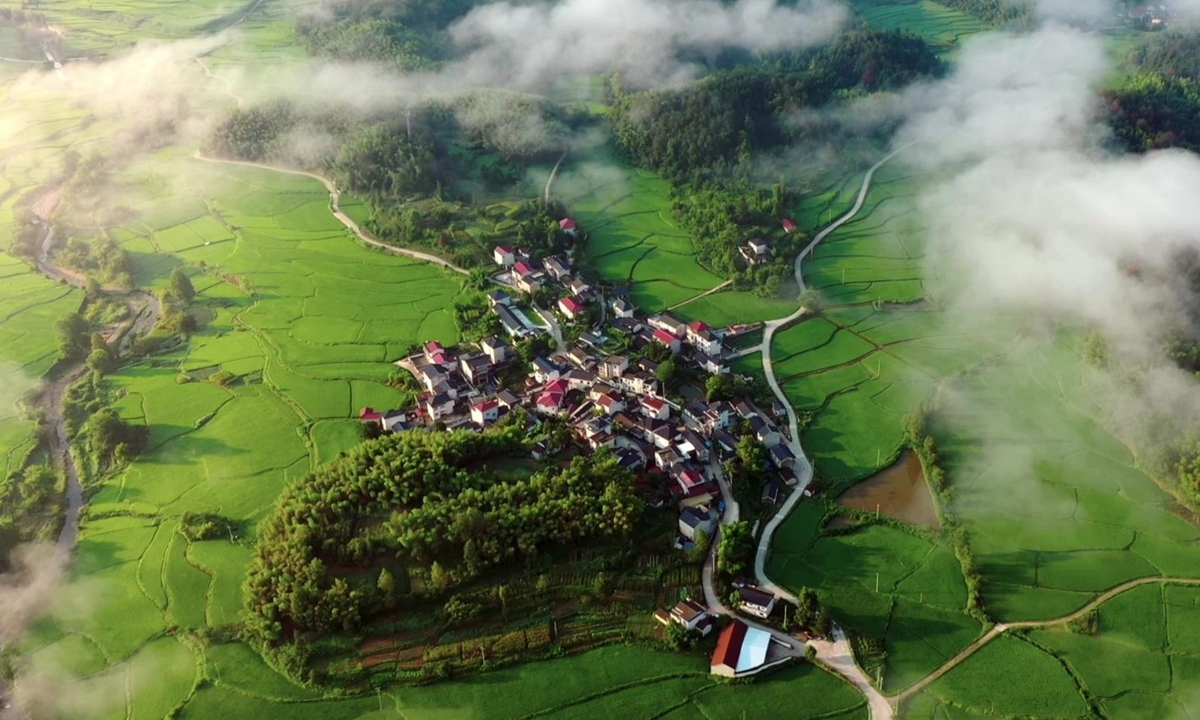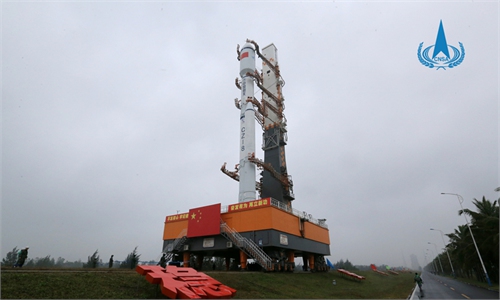ARTS / CULTURE & LEISURE
New documentary decodes Chinese path to modernization
Tremendous changes represented by national highway

A village in Anhui Province that appears in the documentary Navigating to the Future Photo: Courtesy of Mango TV
The G318 National Highway is one of the most well-known highways in China. Located at the 30th par-allel north, the highway runs from Shanghai in the east all the way to Xigaze city in Southwest China's Xizang Autonomous Region. It takes a central place in China's road culture by quite literally offering a panoramic view of China's culture and landscapes.
The new documentary Navigating to the Future airing on China's Mango TV aims to present the real and touching stories taking place in cities, towns and villages along the 5,476-kilometer-long highway to demonstrate the great developments and changes Chinese modernization has brought the country's economic, cultural and high-technology sectors.
"It is an incomparable route from east to west with a wide variety of beautiful scenic views," Sun Lu, the series' director, told the Global Times on Monday.
"More importantly, we can see the development of modern Chinese civilization in different regions through these geographical clues."
Through interesting small stories about subjects like intellectual property protection, digital delivery systems, legal education and smart urban management, the five-episode documentary manages to explore grand themes while remaining close to people's lives.
The significance of the word "highway" is reflected not only in its actual function as a traffic network, but also in expectations and yearning.
"We had a very simple feeling of happiness during the entire shoot because of the sincere smiles on the faces of people we filmed. We just captured and recorded their happy moments, instead of asking them to pose for us. This made it easy for us to capture their happy lives," said Sun, adding that this happiness is based on China's unique development road with Chinese characteristics.
China's efforts in rural vitalization, cultural confidence and high technology have led local people to a better life. During the journey, Sun found that what touched him the most was not the scenic views but the people they met along the way, from hard-working local villagers and officials to China's young Gen Zs.
Li Kewen, a local village Party chief in East China's Anhui Province, had long dreamed of helping locals find ways to improve their standards of living and make their villages more beautiful. He has worked with locals to set up a base camp to attract more and more city people who drive there for the weekend. Also in Anhui, Liu Lin devotes her time to preserving old buildings and houses that "carry the memory and warmth of many local villages."
The last episode finishes up in Xizang, where more and more young people are choosing to return to their hometowns after graduating from college in metropolises like Beijing and Shanghai. After graduating from a Shanghai college, actress Chilie Baimu chose to continue her acting career with the Xizang Drama Troupe. In the series, she introduces viewers the 1,300-year-old Mangkang Ancient Salt Field, a unique cultural landscape.
Young architect Xia Yujun has been working in Lhasa since 2016 to restore a mural at the Jebum Gang Art Center.
"After the murals are restored, we will have a window to see the historic culture of the ancient city. Young people like me can understand the folk tales, art and culture here," he said.
"Thanks to young Gen Zs like Xia, we are experiencing tremendous changes across cities in Xizang," said Sun, who finds that online car-hailing services have become commonplace in the region due to rapidly developing infrastructure.
"You can even enjoy 5G service on Mount Qomolangma [commonly known as Mount Everest in the West]," Sun added.




